

The Scottish Coastal Rowing Association
Filter the news using the menu below, a (very) brief note on the history of rowing on the tay.
- May 19, 2019
From a chance meeting with the Commodore of Royal Tay Yacht Club (formed 1874), who mentioned that his parents met though rowing on the Tay. His father was a member of Broughty Ferry Boating Club and his mother was a member of Dundee Corinthians Rowing Club . Regattas of the time also featured Wormit Boating Club .
According to a set of notes found on a facebook page “Dundee Corinthian Boat Club Memories” , Dundee Boating Club was formed in 1890 with a regatta first held in 1894, Dundee Co-op Rowing Club was formed in 1871, the same year as Broughty Ferry and Monifieth Rowing Club . Dundee Corinthian Boating Club itself is described as being formed in 1923/24 with a committee with the surnames Davie, Glass, Sidden, Duncan, Sutherland, and Henderson (secretary). Broughty Ferry Boating Club is also shown as established in 1923-24.
Some of the boats used were Jolly Boats of the type used by Royal West in the Castle to Crane race. The jolly boats were around 25 feet long with a lower freeboard than a St Ayles Skiff but also rowed by four rowers sitting one at each station, with a cox steering and commanding. One of the boats, previously owned by Wormit Boating Club and now owned by a consortium or rowers down in Richmond-on-Thames is raced from time to time at the Great River Race. A Broughty Ferry Boat was transferred via Portobello to Royal West of Scotland Boat Club at Greenock. Single sculls and pairs also featured in races in the past.
We know there are at least 4 of the original wooden rowing boats stored on the Fife side of the Tay, in Newport and Wormit. One of them ( Argo built in 1924 by Salters for Newport Rowing Club ) is currently being refurbished in Richmond with the intention of her coming back to the Tay.

With the exception of the Coble Boat Racing at Newburgh (first recorded race in 1880, and hard, hard racing still held at an annual championships), rowing racing died out all together on the Tay in the sixties or seventies. We are of course delighted that it has been brought back through the growth of the St Ayles skiff and the Scottish Coastal Rowing Association. Broughty Ferry Boating is a branch of the Royal Tay Yacht Club, and their luxury boat shed storing two St Ayles Skiffs is built on the site of the old Broughty Ferry Boating Club sheds. Wormit Boating Club had continued on as a sailing club, but reintroduced rowing and now has 2 St Ayles Skiffs. Newburgh Rowing Club also has 2 St Ayles skiffs, and there is going to be a Perth Rowing Club launching a skiff from near the Friarton Bridge.
We would love to be able to publish a longer article about the History of Rowing on the Tay. Please get in touch if you could research and write it. In the meantime anyone interested in history of rowing in Scotland should purchase the Old Clyde Pullers , which is a history of 14 rowing clubs in Inverclyde, a stretch of coast where only one rowing club survives. “Pulling” is where each crew member has one “sweep” oar. “Rowing” was historically used to describe a rower with 2 oars….. what is now referred to in racing as “sculling”.

Scottish Coastal Rowing is a registered charity in Scotland : SC050345.
Registered address: Harbourhead, Anstruther, Fife, KY103AB Privacy Policy
Privacy Overview

This website uses cookies
We place some essential cookies on your device to make this website work. We'd like to use additional cookies to remember your settings and understand how you use our services. This information will help us make improvements to the website.
Royal Tay Yacht Club, Dundee
This page summarises records created by this organisation.
The summary includes a brief description of the collection(s) (usually including the covering dates of the collection), the name of the archive where they are held, and reference information to help you find the collection.
Sign me up to the mailing list
Subscribe now for regular news, updates and priority booking for events

Find out more
- Jobs and careers
- Friends of The National Archives
- Website A-Z index
- Accessibility
- Podcasts and videos
- Image library
- UK Government Web Archive
- Legislation.gov.uk Opens a new window
- Find case law
- The Gazette Opens a new window
- Terms of use
- Privacy policy
- Freedom of Information
- Transparency
All content is available under the Open Government Licence v3.0 , except where otherwise stated

Royal Tay Yacht Club
The only legal part of the listing under the Planning (Listing Buildings and Conservation Areas) (Scotland) Act 1997 is the address/name of site. Addresses and building names may have changed since the date of listing – see 'About Listed Buildings' below for more information. The further details below the 'Address/Name of Site' are provided for information purposes only.
Address/Name of Site
West ferry, 34 dundee road, royal tay yacht club including walls and gatepiers lb25929.
There are no additional online documents for this record.
Description
George Mathewson, circa 1838 with later alterations. 2-storey gabled block with single storey piended-roofed projecting wings over basement, formally planned classically detailed villa. Harled with painted margins, slate roof. Margined angles, some original 12-lying-pane sash and case windows, other single and 2-pane, bracketed eaves at 2-storey central bay, faceted roofs at flanking projecting bays, 4 vertically channelled stacks with moulded copes and identical octagonal cans on long north-south walls of central block.
S (MAIN) ELEVATION: 3-bay original building with later extension to right; basement with barred windows at canted bays, band course at principal floor level; central Ionic distyle loggia with decorative cast-ironwork and open-work parapet, window in flanking canted bays with single and 2-pane glazing, deep eaves, facetted roof. French doors at 1st floor with blind side lights toVenetian-style window.
W (ENTRANCE) ELEVATION: advanced piend-roof porch to centre with sash and case window, door to left; flanking windows, blocked to right in wing.
N (ROAD) ELEVATION: projecting gabled centre with two 4-pane sash and case windows at principal floor centre, one 12-lying-pane at 1st floor; 1 inserted window in right wing.
INTERIOR: central hall with paired Ionic columns E and W, coffered dome with oculus. Stairs to basement resited and replaced in compatible style 1980s.
Rubble enclosing wall with rounded coping at N, hexagonal section panelled gatepiers with coulded caps. Retaining wall at S with doorway to right and stair leading down to lawn. To left: single storey flat-roofed addition extending to ground falling to S. Further walls at E and W.
Statement of Special Interest
No 34 Dundee Road, an attractive, classically detailed villa with piended-roofed projecting wings, was built as the home for a shipping magnate and is known as 'Fort William House'. Interior features of note include its fine coffered dome with oculus and a distinctive turned timber handrail to stairs to the upper floor. Situated on higher ground overlooking the Firth of Tay, the villa is shown in a painting of 1838 by George McGilvray.
The Royal Tay Yacht Club was established in Dundee as the Tay Corinthian Sailing Club in March 1885. It moved to Beach Club House premises at nearby West Ferry Bay (see separate listing) in 1887. The club acquired 34 Dundee Road in 1955 for use as the principal clubhouse.
The associated Club House at West Ferry Bay by the shore (see separate lisiting) is visible from the balcony of 34 Dundee Road and is a rare and largely unaltered example of a small purpose-built 19th century yacht club house in Scotland.
The history of yacht clubs and sailing as a competitive sport has its origins in Ireland in the mid 18th century. Interest in the sport gathered pace in Scotland throughout the 19th century and was flourishing by the early 20th century. Scotland is world renowned for its waters with its wealth of coastal inlets, firths, fresh and saltwater lochs, rivers and canals, appealing to competitive and recreational sailors.
List description updated as part of the sporting buildings thematic study (2012-13).
Bibliography
1st Edition Ordnance Survey Map (1862). A C Webster, The Royal Tay Yacht Club, A History Of A Hundred Years (1984). C McKean and D Walker, Dundee ' An Illustrated Architectural Guide (1985) p105. George McGilvray, painting of train at West Ferry at opening of Dundee and Arbroath Railway, 6th October 1838, (McManus Galleries, Dundee).
About Listed Buildings
Historic Environment Scotland is responsible for designating sites and places at the national level. These designations are Scheduled monuments, Listed buildings, Inventory of gardens and designed landscapes and Inventory of historic battlefields.
We make recommendations to the Scottish Government about historic marine protected areas, and the Scottish Ministers decide whether to designate.
Listing is the process that identifies, designates and provides statutory protection for buildings of special architectural or historic interest as set out in the Planning (Listed Buildings and Conservation Areas) (Scotland) Act 1997.
We list buildings which are found to be of special architectural or historic interest using the selection guidance published in Designation Policy and Selection Guidance (2019)
Listed building records provide an indication of the special architectural or historic interest of the listed building which has been identified by its statutory address. The description and additional information provided are supplementary and have no legal weight.
These records are not definitive historical accounts or a complete description of the building(s). If part of a building is not described it does not mean it is not listed. The format of the listed building record has changed over time. Earlier records may be brief and some information will not have been recorded.
The legal part of the listing is the address/name of site which is known as the statutory address. Other than the name or address of a listed building, further details are provided for information purposes only. Historic Environment Scotland does not accept any liability for any loss or damage suffered as a consequence of inaccuracies in the information provided. Addresses and building names may have changed since the date of listing. Even if a number or name is missing from a listing address it will still be listed. Listing covers both the exterior and the interior and any object or structure fixed to the building. Listing also applies to buildings or structures not physically attached but which are part of the curtilage (or land) of the listed building as long as they were erected before 1 July 1948.
While Historic Environment Scotland is responsible for designating listed buildings, the planning authority is responsible for determining what is covered by the listing, including what is listed through curtilage. However, for listed buildings designated or for listings amended from 1 October 2015, legal exclusions to the listing may apply.
If part of a building is not listed, it will say that it is excluded in the statutory address and in the statement of special interest in the listed building record. The statement will use the word 'excluding' and quote the relevant section of the 1997 Act. Some earlier listed building records may use the word 'excluding', but if the Act is not quoted, the record has not been revised to reflect subsequent legislation.
Listed building consent is required for changes to a listed building which affect its character as a building of special architectural or historic interest. The relevant planning authority is the point of contact for applications for listed building consent.
Find out more about listing and our other designations at www.historicenvironment.scot/advice-and-support . You can contact us on 0131 668 8914 or at [email protected] .
There are no images available for this record, you may want to check Canmore for images relating to WEST FERRY, 34 DUNDEE ROAD, ROYAL TAY YACHT CLUB INCLUDING WALLS AND GATEPIERS
There are no images available for this record.
Printed: 25/03/2024 08:19

- > Dundee
- > A-Z of Secret Dundee: Yachts
A-Z of Secret Dundee: Yachts
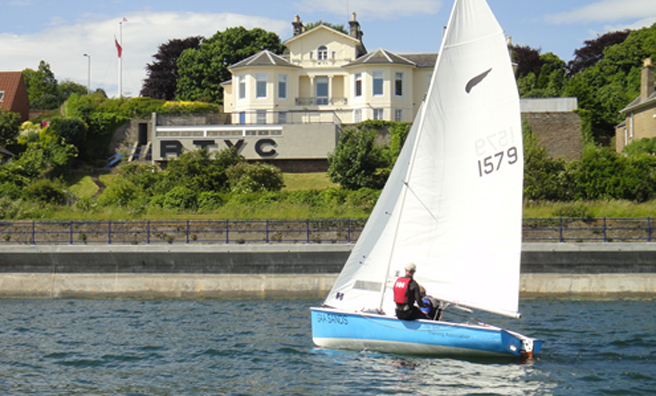
Dundee is a perfect place to find your sea legs and try a bit of sailing.
The Royal Tay Yacht Club in Broughty Ferry has been teaching local land lubbers how to know their leeward from their windward since 1885.
Sailing is a sport for all
Don’t be put off by their grand-sounding name though, as the good folks at the RTYC believe that sailing is a sport for all. They have a fantastic clubhouse overlooking the Tay and run regular yacht sailing training, races and events like “Go Sailing Sundays” where groups of club members and their family and friends set off for a sail and a picnic.
If you prefer to stay on dry land however, you can join the Dundee Model Boat Club which was also formed in 1885. They meet regularly at Stobsmuir (“Swannie”) Ponds in the east end of the city where they have a small clubhouse. All types of models are sailed including small and large yachts and scale models.
Royal Tay Yacht Club , Fort William House, 34 Dundee Road, West Ferry, Dundee, DD5 1LX.
www.modelboating.co.uk/
More Secret Dundee
- Zoology Museum
- Braithwaite
- Clark’s 24 Hour Bakery
- Dighty Connect
Related Posts
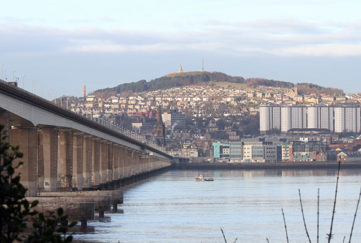
Secret Dundee
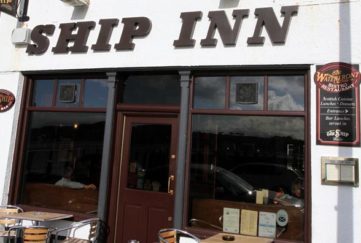
A-Z of Secret Dundee: The Ship Inn
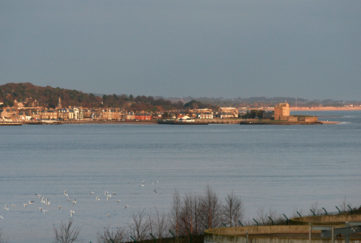
A-Z of Secret Dundee: Estuary

Find a Stockist
Enter your postcode below (with a space) and click "Find" to search for your local stockist.
- Club of the Year
Royal Tay Yacht Club
Green club of the year finalist.
The Royal Tay Yacht Club in Scotland moved from their former clubhouse and purchased a new all electric eco-friendly clubhouse, working on reducing carbon emissions and cost-efficiency. This was a fundamental change to its operating model which had been in place for the last 68 years. These changes have been embraced by members and represent a cultural shift as well as behavioural change. The new building has underfloor heating generated by new air source heat pumps, a high standard of thermal insulation, maximising solar gain, and offers electric vehicle charging. Waste reduction, recycling, and regular beach clean-ups all take place.
You are using an outdated browser. Please upgrade your browser .
- Sign in Facebook Google or Forgot password? Sign in Sign up

- Royal Tay Yacht Club, Dundee, United Kingdom
United Kingdom
Sailing / Yacht Club

Royal Tay Yacht Club
View on map
Founded Year
The Royal Tay Yacht Club, or RTYC as it is referred to locally, has had its station on the Northern shore of the River Tay at West Ferry Bay, Dundee, Scotland for over one hundred years. The Club itself was founded in 1885 under the name of The Tay Corinthian Sailing Club before becoming The Tay Corinthian Yacht Club in 1887. Four years later, in 1891, the Club again changed its name to The Royal Tay Yacht Club following approval from HM Queen Victoria. Today the RTYC operates from its main clubhouse on Dundee Road, West Ferry and also has properties on the beach area at West Ferry Bay where all the main sailing activities are conducted. The Club also owns covered boat storage close to the harbour at Broughty Ferry, located about 0.5 mile from the main club.
34 Dundee Road
+44 1382 477516
[email protected] , [email protected]
http://www.royaltay.org/
- What is WebCollect?
- Sign in or Sign up!

Flexible Easy Affordable
Online membership and events management software, for clubs, societies and associations, what webcollect can do for you:.
- Manage all your member data online
- Store any custom data you wish
- Family, junior memberships
- Subscription renewals
- Event registration and booking
- Group email to members
- Collect payments via Direct Debit, PayPal & Cards
- Low transaction fees

Case Studies
The Old Parkonians Association

Organisation templates for a variety of sectors now available
In order to make setup for popular sectors easier, we have created a templating system. We have created templates with typical events, subscription and sample content, which can help you get started in understanding the features available in WebCollect. We are creating new templates all the time, so watch this space. View our currently available templates here . More help on templates
Text messaging available now
Our organisations are increasingly using the WebCollect's communication features. Now SMS has been integrated into WebCollect as a core feature throughout the system. Wherever you can email members, you can now text them as well. Great for urgent messages about cancelled events etc. You can buy sms credit packages here . read more...
Choose your currency!
You can now configure organisations with any currency you wish. Your organisation is in the US? Or in the Eurozone? No problem, just select your currency when you set your organisation and away you go.
Direct Debit now live!
You can now collect payments from your members online using Direct Debit. Set-up takes just a few minutes. There is no set-up charge and transaction charges are much lower than PayPal or credit cards. read more...
Why use WebCollect?

Built by club members for clubs.
We understand how clubs and societies work and what they need. WebCollect combines the flexibility to run your club the way you want, with easy to use features that you can manage yourself.
Looking for a specific feature?
TRY 3 Months FREE!
Find out if WebCollect is right for you.
No commitment - try it out!
Find my club
Note that some organisations choose not to be listed here.
What our organisations say about us
"We are impressed with the system's facilities (and in particular the pre-sales support which is among the best I have experienced)"
You really do set the level when it comes to service.
"I would also like to thank you for what is a very good site and service!!"
"Just a quick note to thank you for having designed and implemented such a great system."
"The benefits for us are great and renewals will be easier for members."
"We are thoroughly pleased with WebCollect"
"I shall enjoy trialling Webcollect and congratulate you on it."
"Loving WC. This system is just brilliant."
"Brill software"
"Very impressed with the features and customer service so far - I think it's going to make everyone's jobs much easier (especially mine!)"
"Your customer support is impressive"
"Wow - Thanks so much for the fantastic support!"
"W e are really happy with the way Web Collect is working for us"
"So far we have all been hugely impressed with the system!"
"There is so much scope in the Webcollect system. I do tell everyone I know who is involved in sports and clubs about it as I swear by it now."
"Many thanks again for the super swift support. WC have been exceptional at responding to feedback and addressing issues we encounter!"

Watch our demos
The best way to see what it can do!
See All Videos »
New features added to the Bank Reconciliation Report
New GoCardless report added.
We have posted our updated Privacy Policy , Terms and Conditions , and Data Processing Agreement , in preparation for GDPR.
You can now bypass required fields when completing a form on a member's behalf.
Security Update: WebCollect safe from Meltdown & Spectre attacks
We have added a Subscriptions Category feature. This will enable organisations with a large number of different types of subscriptions to lay them out in categories.
You can now customise your fonts on WebCollect
Card Offline (members) payment method added. Process card payment using your offline card facility. Use this method if you have a merchant account, but not an Internet merchant account. The member can select this method in checkout, declaring that they wish to pay offline (eg at the event).
Membership numbers now show on the member's My Home page.
You can now add customised text to the checkout page.
In the subscriptions renewal email/pdf, you can now remove the subs/member information .
You can now view pending subscriptions as a list on the subscriptions page.
The API now includes events and event bookings.
Event Co- Ordinators can now create new events.
Events now have an option for administrators to be able to buy outside the Selling Date restrictions . This is useful if you want to fill places from a waiting list, or give some members priority entry.
We have added a bulk member delete feature .
The process for members to obtain/reset their password has changed.
You can now change the column layout on the subscription page to a single column, via the Customise your Organisation/style tab.
We have updated our Terms and Conditions and Privacy Notice .
We have made improvements to the import process .
Membership Management and Online Payment Software [+] Read more
WebCollect provides online membership management software for clubs, societies and associations. Upload your spreadsheet list of members. Set up subscriptions for family, group or corporate memberships, junior subscriptions with parental consent forms. You can set up annual subscriptions that all end on the same fixed date each year with pro-rata subscriptions for new members who join during the year. Manage your subscription renewals. Collect membership subscriptions and other payments online using credit or debit cards, bank transfer, cash, cheque, direct debit, or PayPal and reconcile your payments against your bank statements. Collect payments by instalments. Create group email lists and send newsletters to your members. Use our event registration and management booking system to invite members or sell tickets to parties, functions, conferences or courses. Set up event registration forms to collect member data for your events. Members can view your event calendar. Export your financial data into your accounting package. Whether you are a sports club, society, trade association or non-profit organisation, this is the software solution for you.
All major payment methods accepted

- CLASSIFIEDS
- NEWSLETTERS
- SUBMIT NEWS

- Latest videos, from 2021


- CLASSIFIEDS
- NEWSLETTERS
- SUBMIT NEWS

Boats for sale
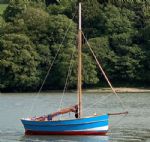
- Latest videos, from 2021

Royal Temple Yacht Club
Yacht Racing, Model Yacht Racing, Cruising & Socializing in Ramsgate, Kent, United Kingdom

RTYC History
The Royal Temple Yacht Club was founded in 1857 by a group of yachtsmen sailing from the Temple Steps, on the River Thames in the centre of London. Yachting as a sport had been established for some time and similar clubs were being opened throughout the UK.
Club racing started on the London River but as the industrial revolution gathered pace commercial traffic on the river made racing increasingly difficult. Races began to be moved further and further down the river, until eventually it was decided that a more suitable base for racing should be found.
Ramsgate Clubhouse
The Ramsgate Clubhouse was opened in 1896 but London remained the club’s centre of social activity. During this time it was not uncommon for members to hold grand banquets and bohemian concerts in order to raise additional funds for the club.
At the turn of the century 2,000 members dined annually at the Hotel Cecil. The Commodore at that time was Baron De Rothschild who was always accompanied by his close friend The Prince of Wales. The Royal Charter was granted in 1897 and the Admiralty Warrant to wear the Blue Ensign was granted in 1898.
Caption- Races would start with the yachts at anchor. Cannons would fire blank charges from the Pier Head to alert the paid hands to weigh anchor and hoist sails. This often resulted in a chaotic mess with boats colliding and tangling their rigging. Its not surprising that the Coast Guards had to be kept on hand to fire the cannon and assist the racers.
During the late nineteenth century, Ramsgate Week enjoyed many famous participants. The German Emperor’s schooner “Meteor” raced from Ramsgate until the First World War and King George V’s lovely cutter “Britannia” raced regularly until 1924.
In 1897 the Royal Temple historically challenged and beat the French in their own waters at the Coupe de France. The club famously laid on steamers so that members could follow the racing at Cannes. During the three years of racing, the Temple yachtsmen repeatedly won and attracted much attention from America. Soon after, an American team entered the competition with a yacht called “America” and donated a new trophy. This trophy is now known internationally as the America’s Cup.
During the Wars
During the brief period between the two world wars the big J class schooners had something of a heyday. In 1940 the RTYC clubhouse was requisitioned by the navy and named HMS Fervant, where it became an officers mess and control room for all the various naval activities in the North Foreland area. Unfortunately, after the war things were slow to recover and racing was mainly confined to small days boats such as Essex one designs and Dragons, which frequently crossed the channel to race in Ostend. During the 1950’s our regatta was known as Kent Yachting Week and by the 1970’s the name had changed to Thanet Week which incorporated dinghy sailing. The dinghy racing eventually declined but with the invention of plastic hulled yachts, our IOR rated fleet expanded and Ramsgate Week was re-launched.
A world-class location
Ramsgate is also recognised as a starting point for many record breaking attempts. Steve Fossett, a former Club member, started and finished at Ramsgate when he claimed the Round Britain record in ‘Playstation 2’; he also landed at nearby Manston (Kent International Airport) in his record breaking transatlantic flight. Dame Ellen MacArthur, also a club member, is much associated with the Club and is fondly remembered for allowing her to be raffled as a prize crew during a recent Ramsgate Week. Christian Rattell and his crew aboard ‘Duece Follie’, from Boulogne, were delighted to have Ellen sail with them in the Ramsgate Gold Cup Race.
Contact Details
01843 591766
6 Westcliff Mansions Ramsgate Kent CT11 9HY.
Quick Links
- 2021 RTYC Results
- Members Area
- Committee Area
Social Media

Copyright 1857-2022 © Royal Temple Yacht Club Ltd. | All Rights Reserved | Privacy Policy
- Bahasa Indonesia
- Slovenščina
- Science & Tech
- Russian Kitchen
A ride across passages of history - Moscow Metro rolls on

Click on the map to enlarge it
Lying at a depth of 5 (Pechatniki station) to 80 metres (Park Pobedy station), the history of the last eight decades unfold before your eyes, carved out of marble and granite and built in iron and glass – revealing the tastes, ideas, dreams, hopes and disappointments of the previous generations and contemporaries. The Moscow Metro dates back to 1931, when its construction first began, although engineers Pyotr Balinsky and Evgeny Knorre submitted their first designs to the Moscow City Duma as far back as 1902. “His speeches carried a strong temptation: like a true demon, he would promise to cast Moscow down to the bottom of the sea and raise it above the clouds”, a journalist for the Russkoye Slovo newspaper commented on Balinsky’s idea. Yet the Duma, made up of rich people, did not bite the bait: after all, they all lived in the centre of the city and never rode overcrowded trams.
After five failed proposals before the Duma, the Moscow Metro finally threw open its doors on May 15, 1935, 18 years after the revolution, and carried the first passengers on its moving staircases, escalators, and the padded seats of its new wagons (unlike the wooden seats in trams). The first metro line – from Sokolniki to Dvorets Sovetov (now known as Kropotkinskaya) -- was 11 km long and had 13 stations. Now, the Moscow Metro has a track of over 300 km with 12 lines and 182 stations. The city’s development outline for 2020 envisages that, by then, another 120 km will have been added to the existing routes.
For the first 20 years of its history, the Moscow Metro was named after Lazar Kaganovich, the “iron commissar” and Stalin’s right hand man, who was in-charge of construction of the first stage of the metro (incidentally, he personally blew up the Cathedral of Christ the Saviour in December 1931 as a part of the Proletarian Capital project). In 1955, however, the Metro was renamed after Vladimir Lenin. Although Russia has long since changed its political track, you can still find the images of the former leader at over 10 stations, including, for instance, busts of Lenin at Belorusskaya and Komsomolskaya stations, impressive mosaics at Baumanskaya and Kievskaya stations, a tile panel in the passage between the Borovitskaya and Biblioteka Imeni Lenina stations. By a bitter irony of fate, Lenin’s full-face and side-face images decorate the Tsaritsyno (translated as the Tsarina’s Estate) station (dubbed Lenino up until 1990) – images of the very person who ordered the shooting of the royal family. You will not, however, find any images of Stalin in Moscow’s underground. A symbol of Russia's victory, he was omnipresent in the late 1940s. After his death in 1953 and the denunciation of Stalin’s personality cult, his images were gradually withdrawn from the Moscow Metro.
“Architecture developed along the same lines, both above and below the surface. Anything that emerged above ground had a reflection underground. It is equally true that vice versa never occurred: good architecture underground but bad architecture above the ground,” says Nikolay Shumakov, chief architect of the Moscow Metro. The first metro stations, up until the mid-1950s, were conceived and built as luxurious “palaces for the people”, great architecture for a great state. Art historians insist that the richly-decorated underground was a deliberate ideological move to eulogise the young Soviet country. Stations built between 1937 and 1955 are characteristic of the first architectural period. Everything completed at this time is worthy of special attention. For instance, look at the ceiling at Mayakovskaya and Novokuznetskaya stations to see mosaic panels based on designs by artist Alexander Deineka – 24-Hour Soviet Sky and Heroic Labour of the Soviet People on the Home Front. The mosaics were assembled by famous mosaic artist Vladimir Frolov, author of the mosaic icons in St. Petersburg’s Church of the Saviour on Blood. The Ploshchad Revolutsii station was decorated with 76 bronze sculptures of workers, soldiers, farmers, students and other Soviet people. You can even find a frontier guard with a dog and rub its nose for good luck. You may also note that all the figures (except pioneers) are either sitting or bent, which engendered the sad joke – “Any Soviet man is either in jail or on his knees.”
Elements of decoration in Moscow's metro. Photos by Alexandr Ganyushin
1955 heralded the end of the good times for Russian architecture – both underground and above ground – after the Communist Party issued a decree "On elimination of extravagance in design and construction.” Dull stations, without any stucco work, mosaics, original columns or other “unjustified” elements, were built under the slogan “Kilometres at the expense of architecture”. Things were the same above the ground, where entire cities were built of commonplace five-storey apartment blocks, all looking the same, nicknamed ‘Khrushchevkas’ after the then leader, Nikita Khrushchev. To get a sense of this period’s architecture, see the few stations built in the 1960s-1980s like Tverskaya, Kitay-Gorod and Kolomenskaya. In 2002, with the reconstruction of the Vorobyovy Gory station, the development of the Moscow Metro entered a third stage, which could be defined as ‘renaissance’. The platform of the station offers a splendid view of the Moskva River, the Luzhniki Olympic Complex and the Academy of Sciences building. Architectural canons of the 1930s-1940s were once again in use in the design of underground stations. By the same token, artists once again become involved in decorating the stations. As such, the Sretensky Bulvar station boasts silhouettes of Pushkin, Gogol, and Timiryazev and Moscow sights; the Dostoevskaya station is decorated with black-and-white panels featuring the main characters from Dostoyevsky’s novels The Idiot, Demons, Crime and Punishment, The Brothers Karamazov, and the Maryina Roshcha station flaunts its pastoral mosaic landscapes. In 2004, Russia's first monorail transport system was launched into service – an elevated track (running 6 to 12 metres above the ground) in the northern part of Moscow, linking the All-Russian Exhibition Centre and the Timiryazevskaya metro station. The evolution of the Moscow Metro goes on. It’s still a work in progress, with ambitious plans to move the Moscow Metro even closer to passengers over the next ten years, not just by adding an extra 120 km to its total track. “We want to strip the stations of everything we can,” says Nikolai Shumakov. “We are trying to show the passengers their very framework, what the metro is made of. Cast iron and concrete are beautiful.”
Joy ride: Read Gogol, Dante or savour art

The Aquarelle Train. Source: Reuters/Vostock-Photo
With any luck, you can ride in a retro train, a moving art gallery or a library. The trains are actually a part of the general traffic (i.e., they do not run to any special schedule) and are used on certain lines. The Reading Moscow Train , an ordinary train on the face of it, features extracts from literary works for adults and children. Each wagon has its own selection, from children’s fairy tales to Gogol. Circle Line. The Poetry in Metro Train carries an exposition, updated this year, dedicated to Italian poets Dante Alighieri, Francesco Petrarch, Giacomo Leopardi, etc. All the poems are featured in two languages, Russian and Italian. Filevskaya Line. The Sokolniki Retro Train looks exactly like the first Moscow Metro train, both inside and out. Painted brown, it has padded seats, typical wall decorations and retro lamps. Sokolnicheskaya Line. The Aquarelle Train looks like a cabinet painted with flowers and fruit on the outside. Inside, it is an art gallery featuring art reproductions from the Vyatka Apollinary and Viktor Vasnetsov Art Museum. Arbatsko-Pokrovskaya Line.
Revolution Square station (built in 1938) is close to the Red Square area. There are 72 sculptures in the station, depicting the people of the Soviet Union, including soldiers, farmers, athletes, writers, industrial workers and school children.
All rights reserved by Rossiyskaya Gazeta.
to our newsletter!
Get the week's best stories straight to your inbox
This website uses cookies. Click here to find out more.
THE BEST OF ST.PETERSBURG WITH THE BEST GUIDES Professional licenced tour guides. Individual and group tours, tailor-made itineraries.
CHEAP FLIGHTS TO LOS ANGELES Flying has never been so affordable! Now you can save up to 65% on cheap flights to Los Angeles year round.

IMAGES
COMMENTS
History A 'Royal' Club with a 'Victorian' heritage, but with a modern outlook of family friendly water sports "At a meeting of gentlemen, favourable to the formation of a Sailing Club, held in Lamb's Hotel Dundee on Friday 27th March 1885, it was unanimously resolved by those present to form themselves into a Sailing Club to be known as the Tay Corinthian Yacht Club"
From a chance meeting with the Commodore of Royal Tay Yacht Club (formed 1874), who mentioned that his parents met though rowing on the Tay. His father was a member of Broughty Ferry Boating Club and his mother was a member of Dundee Corinthians Rowing Club.Regattas of the time also featured Wormit Boating Club.. According to a set of notes found on a facebook page "Dundee Corinthian Boat ...
The summary includes a brief description of the collection (s) (usually including the covering dates of the collection), the name of the archive where they are held, and reference information to help you find the collection. Date: 1885-1975. Places: Dundee, Angus. Functions, occupations and activities:
The fact, therefore, of the Royal Tay Yacht Club flourishing in the district speaks volumes for the enthusiasm of the yachtsmen who keep the sport alive there. The club was founded in 1885, so that it is some four years junior to the Royal Forth, with which it shares the honour of being the principal organization devoted to yachting on the East ...
Welcome to the Royal Tay Yacht Club, one of Scotland's premier water-sports clubs. We provide opportunities for sailing , coastal rowing and Power Boat training at Grassy Beach, Broughty Ferry. Membership for new sailors includes a learn to sail course and ongoing support. For those wanting to advance, various courses are available.
The yacht club has more recently constructed an elevated timber 'racing box' to the east of the club house. The Royal Tay Yacht Club was established in Dundee as the Tay Corinthian Sailing Club in March 1885. It moved to these premises on the beach at West Ferry Bay, Firth of Tay in 1887. The club acquired the villa at nearby 34 Dundee Road ...
The Royal Tay Yacht Club was established in Dundee as the Tay Corinthian Sailing Club in March 1885. ... The Royal Tay Yacht Club, A History Of A Hundred Years (1984). C McKean and D Walker, Dundee ' An Illustrated Architectural Guide (1985) p105. George McGilvray, painting of train at West Ferry at opening of Dundee and Arbroath Railway, 6th ...
The Royal Tay Yacht Club in Broughty Ferry has been teaching local land lubbers how to know their leeward from their windward since 1885. Sailing is a sport for all. Don't be put off by their grand-sounding name though, as the good folks at the RTYC believe that sailing is a sport for all. They have a fantastic clubhouse overlooking the Tay ...
The Royal Tay Yacht Club in Scotland moved from their former clubhouse and purchased a new all electric eco-friendly clubhouse, working on reducing carbon emissions and cost-efficiency. This was a fundamental change to its operating model which had been in place for the last 68 years. These changes have been embraced by members and represent a ...
+30 210 72 33 093 Mon-Fri: 10.00am - 18.00pm. Sign in. Facebook
Royal Tay Yacht Club - Sailing in Dundee Scotland, Dundee. 1,238 likes · 4,065 were here. Royal Tay Yacht Club, Dundee Promoting sailing, rowing and power boating since 1885. An established water...
Membership. Join the club online here. Begin by choosing the type of membership subscriptions you want by clicking the "browse subscriptions" blue button. If you need any help, do not hesitate to email [email protected] or phone the club tel. 477516. existing members can renew membership subscriptions and update personal details.
Scottish Tour for fleet to take in Kielder Water, Lochaber and Royal Tay Posted on 3 Apr 2023 RTYC One of a Kind Regatta by Stewart Murdoch Sunshine and a strong westerly winds for the seven classes taking part Posted on 21 Jun 2022 Northern 29er Sprints 2022 on the Tay
The Royal Tay Yacht Club page on YachtsandYachting.com - the first place to stop for reports, results, fixtures & photographs from racing sailing
At the Royal Tay Yacht Club new members are very welcome, come along and see for yourself. Sign in as a guest, take a look around our facilities and see for yourself what the Royal Tay Yacht Club has to offer. Feel free to contact us with any questions [email protected] or call the club 01382 477516. We all look forward to meeting you.
The Royal Temple Yacht Club was founded in 1857 by a group of yachtsmen sailing from the Temple Steps, on the River Thames in the centre of London. Yachting as a sport had been established for some time and similar clubs were being opened throughout the UK. Club racing started on the London River but as the industrial revolution gathered pace ...
Milestones From 13 stations in 1935 to 182 in 2011, Metro also attracts thousands as an underground museum; plans to add another 120 km track by 2020.
History of the Moscow Metro (see Moscow metro scheme) The Moscow Metro was initially built under the 1930's Moscow general plan designed by Lazar Kaganovich and was named after him ("Metropoliten im. L.M. Kaganovicha"). The first line opened on 15 May 1935 between Sokolniki and Park Kultury. The construction of the first stations was based on ...
Get directions to Yuzhny prospekt, 6к1 and view details like the building's postal code, description, photos, and reviews on each business in the building
Lenina Ave., 40/8, Elektrostal 144005 Russia +7 495 120-35-45 Website + Add hours Improve this listing.